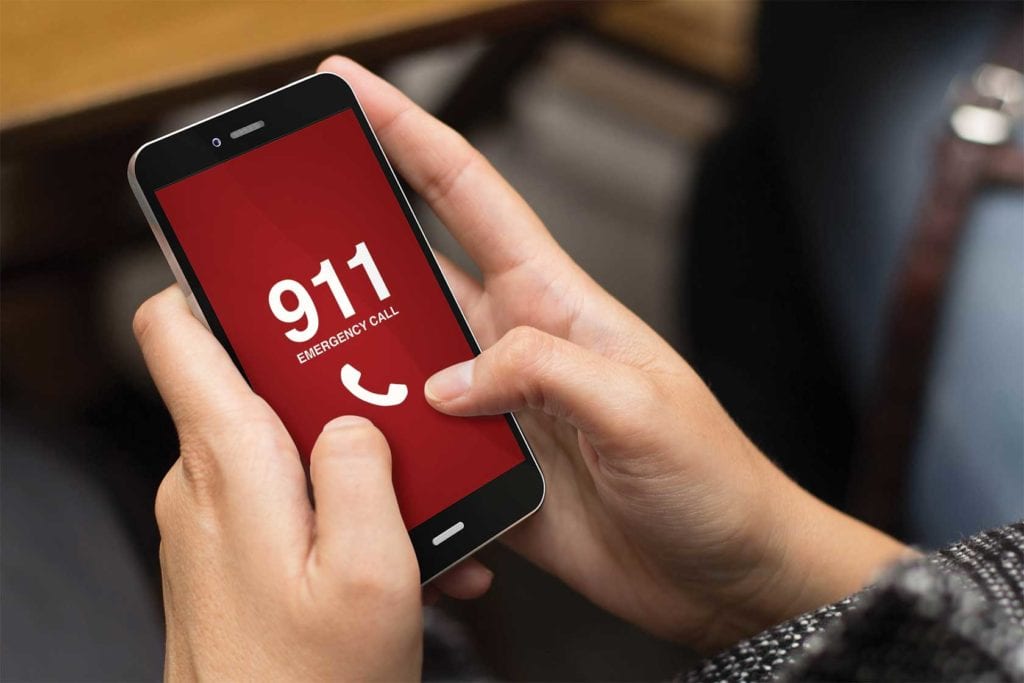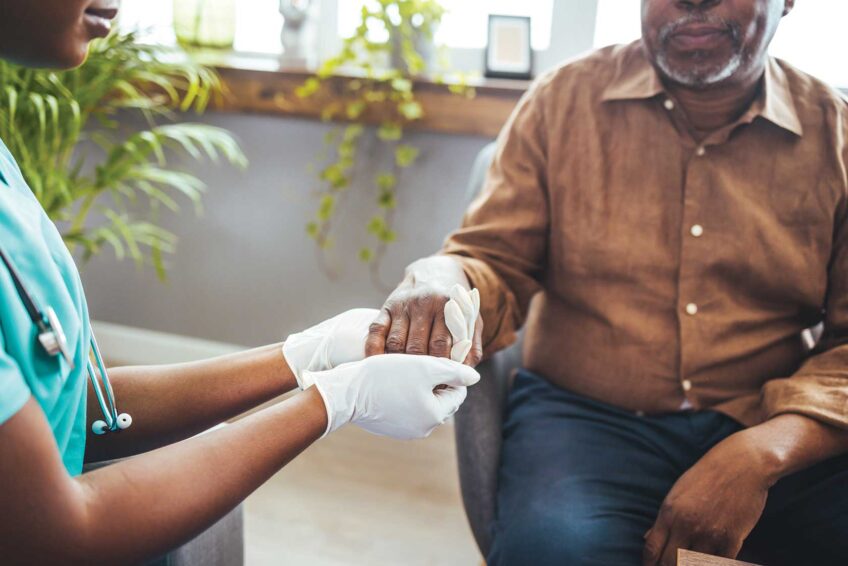
It comes on quickly. One minute you’re fine; the next you have weakness on one side of the body. You lose partial vision. You try to speak, but the words don’t come out right. Someone says something to you, but it makes no sense. You’re a little wobbly on your feet.
It sounds like you’re having a stroke. You’re not alone. Almost 800,000 people experience similar symptoms every year. Every 40 seconds someone in the U.S. has a stroke, according to the American Heart Association. The outcomes are not very favorable. Stroke is the fifth leading cause of death in this country, and one of the leading causes of disability.

Dr. Thabele Leslie-Mazwi is the director of Endovascular Stroke Services at Massachusetts General Hospital. PHOTO: MASSACHUSETTS GENERAL HOSPITAL
Stroke occurs when the blood supply to the brain is interrupted. There’s more than one type. Most common are ischemic strokes that are caused by a blockage due to a blood clot or cholesterol buildup. Hemorrhagic strokes occur when an artery in the brain leaks or bursts. These are much less common but more frequently result in death or complications.
A transient ischemic attack (TIA), or mini-stroke, can actually be even more dangerous. That’s because the symptoms are short-lived. Within a few minutes, you’re back in form. People then assume all is well, but according to the Centers for Disease Control and Prevention, more than one-third of people who experienced a TIA, and failed to get treatment, will have a major stroke within one year. A TIA is more or less a harbinger of what can come if ignored. That is why even these short-term episodes require immediate care as well.
TYPES OF STROKE
-
- Ischemic: blockage in an artery feeding the brain
- Hemorrhagic: rupture of an artery in the brain
- Transient ischemic attack (TIA): temporary blockage of blood flow to the brain
- Cryptogenic: stroke of unknown cause
Call 911
But that’s the problem. Not many people call 911 when experiencing symptoms of stroke. They prefer to wait it out hoping they will subside. Even worse — they don’t recognize the symptoms at all. Dr. Thabele Leslie-Mazwi, the director of Endovascular Stroke Services at Massachusetts General Hospital, understands why this may happen more than it should. “Stroke is not painful,” he explained. “You’re not bleeding; it’s a non-dramatic event.” In addition, it is not highly publicized. For instance, characters in movie or TV scripts often have heart attacks. The classic gripping of the chest or left arm is a common depiction, but you don’t see characters having strokes.
Unlike a heart attack, stroke is a disease of loss, explained Leslie-Mazwi. “Something is suddenly taken away. You lose something. You can’t move, you can’t speak, you can’t feel; you can’t see.”
The American Heart Association/American Stroke Association has made great strides in educating the public about the symptoms of stroke. It developed the acronym “FAST,” which stands for Face, Arm, Speech and Time (to call 911). But it may be better explained as “BEFAST” by adding Balance and Eyesight. ”Almost everyone will have one or more of these symptoms,” he explained.
Prevention
As common as this illness is, it’s surprising that an estimated 80 percent are preventable. Some risk factors are not avoidable. We cannot control age or race. Stroke increases with age and is more common in blacks.
RISK FACTORS
Some risk factors are outside of your control
- Age
- Race
- Gender
- Previous stroke
- Family history
Others you can monitor
- High blood pressure
- Diabetes
- High blood cholesterol
- Atrial fibrillation — irregular heartbeat
- Smoking
- Obesity
- Diet
- Physical inactivity
Other factors, however, are more our doing. The biggest culprit is high blood pressure. That is indeed worrisome, since one in three adults in this country are afflicted, and only about half have it under control. High blood pressure is the most common controllable risk factor, but atrial fibrillation, an abnormal heart beat, is the most potent, increasing the probability of stroke more than five times. Additional risk factors are diabetes, high cholesterol, unhealthy weight and diet. All these factors can generally be controlled with medication and lifestyle changes.
Smoking is particularly egregious. “It’s like taking a wire scratcher to the blood vessels, leaving them prone to forming blood clots,” Leslie-Mazwi explained. Yet, in this country there is more focus on hard drugs like cocaine, but tobacco is more common and accessible and kills more people than all illegal drugs combined.
The good news is that it’s never too late to start good vascular health. The benefits accrue over time. Unfortunately, if you have had a stroke, turning over a new leaf does not always immediately protect you from another one. However, with good vascular health the risk of a second stroke decreases dramatically.
A step back
Although most causes of stroke are well known, and treatments to stem the damage exist, this country has taken a step backwards when it comes to controlling the condition. In 2005, it was the third leading cause of death, but by 2013, it dropped to fifth place. The bad news is that it is now trending upward again. According to the CDC, declines in deaths from stroke have continued in only 13 states; they’ve slowed in 16 states; and actually reversed in 22, including Massachusetts.
Why the change? There are probably many reasons. One is that stroke is no longer a disease of the elderly, and is occurring more frequently in younger people, largely due to the same risk factors, especially obesity. More than one-third of people hospitalized for stroke are now less than 65 years old.
In addition, there is an increasing number of cryptogenic stroke in patients under the age of 45. Cryptogenic strokes have no known discernible cause.
A step forward
Significant changes are in play for the emergency treatment of strokes. A drug called alteplase has been available for years, but its administration was limited to a roughly four-hour window following the first sign of a stroke. “A one size fits all approach,” explained Leslie-Mazwi. That meant that people who woke up with stroke were automatically not eligible. Now after review of a patient’s CT scan, a neurologist on the stroke team can determine whether the opportunity for the treatment still exists.
In addition, a new drug called tenecteplase may be even more effective than alteplase. Both medications are introduced to a vein to wend its way to the clot. But the biggest recent breakthrough has been with a treatment called thrombectomy, which involves a minimally invasive surgery to mechanically remove the clot.
Rapid intervention, regardless of type, can often stop a stroke in its track and reverse damage, giving patients the greatest chance of a return to independent life.
Just one word of advice
If you or someone you are with demonstrates even one symptom of stroke, call 911. You may be incorrect, but it’s best to err on the side of safety. “Every second counts. When your brain is affected, don’t roll the dice with your health,” warned Leslie-Mazwi.






